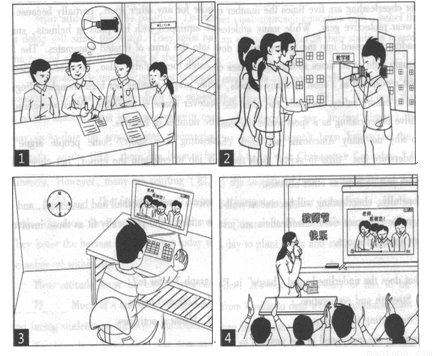题目内容
The National Gallery
Description:
The National Gallery is the British national art museum built on the north side of Trafalgar Square in London. It houses a diverse collection of more than 2,300 examples of European art ranging from 13th-century religious paintings to more modern ones by Renoir and Van Gogh. The older collections of the gallery are reached through the main entrance while the more modern works in the East Wing are most easily reached from Trafalgar Square by a ground floor entrance
Layout:
The modern Sainsbury Wing on the western side of the building houses 13th- to 15th-century paintings, and artists include Duccio, Uccello, Van Eyck, Lippi, Mantegna, Botticelli and Memling.
The main West Wing houses 16th-century paintings, and artists include Leonardo da Vinci, Cranach, Michelangelo, Raphael, Bruegel, Bronzino, Titan and Veronese.
The North Wing houses 17th-century paintings, and artists include Caravaggio, Rubens, Poussin, Van Dyck, Velazquez, Claude and Vermeer.
The East Wing houses 18th- to early 20th-century paintings, and artists include Canaletto, Goya, Turner, Constable, Renoir and Van Gogh.
Opening Hours:
The Gallery is open every day from 10am to 6pm (Fridays 10am to 9pm) and is free, but charges apply to some special exhibitions.
Getting There:
Nearest underground stations: Charing Cross (2-minute walk), Leicester Square (3-minute walk), Embankment (7-minute walk), and Piccadilly Circus (8-minute walk).
1.In which century’s collection can you see religious paintings?
A. The 13th. B. The 17th.
C. The 18th. D. The 20th.
2.Where are Leonardo da Vinci’s works shown?
A. In the East Wing. B. In the main West Wing.
C. In the Sainsbury Wing. D. In the North Wing.
3.Which underground station is closest to the National Gallery?
A. Embankment. B. Leicester Square.
C. Piccadilly Circus. D. Charing Cross.
1.A
2.B
3.D
【解析】
试题分析: 作者介绍了英国伦敦国家美术馆。分四大板块进行介绍:整体描述、布局、开放时间以及可以到达美术馆的地铁站。
1.1】A推理判断题。根据文章第一段中的It houses a diverse collectiong of more than 2,300 examples of European art ranging from 13th-century religious paintings to more modern ones by Renoir and Van Gogh.(它藏有从13世纪宗教美术作品到雷诺瓦和梵高的现代作品2300多份的各种各样的藏品),我们可以断定宗教美术作品是13世纪的,故选A。
2.2】B细节理解题。根据文章第三段中的The main West Wing houses 16th-century paintings, and artists include Leonardo da Vinci(主要的西翼藏有16世纪的美术作品以及包括Leonardo da Vinci等在内的艺术家的作品)可知B正确。
3.细节理解题。根据文章最后一段中的Nearest underground stations: Charing Cross(2-minute walk), Leiseter Square(3-minute walk), Embankmen(7-minute walk),and Piccadilly Circus(8-minute walk)所给的时间长度,可以断定Charing Cross是最近的,故选D。
考点:文化类教育。

 天天向上一本好卷系列答案
天天向上一本好卷系列答案 小学生10分钟应用题系列答案
小学生10分钟应用题系列答案